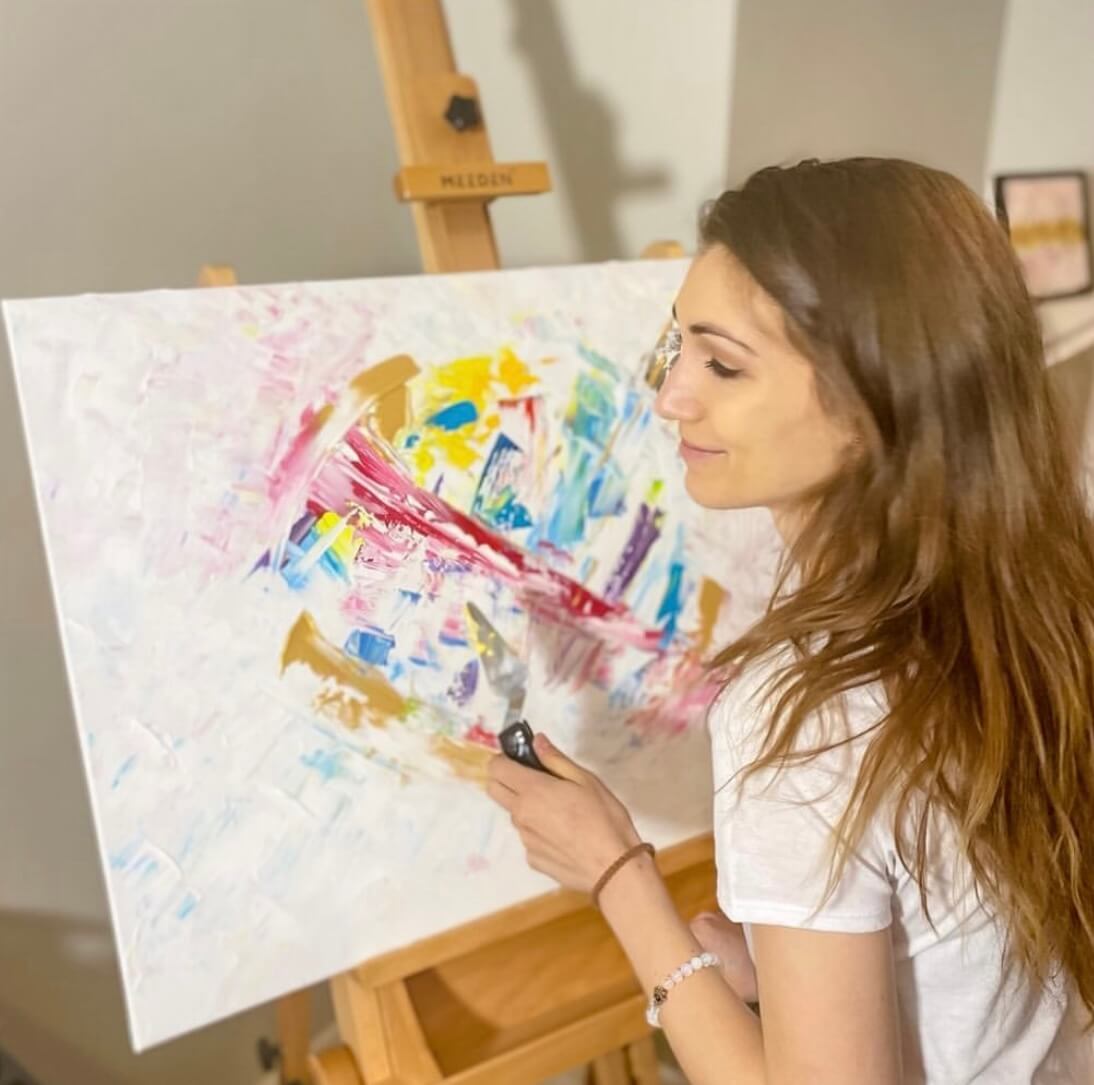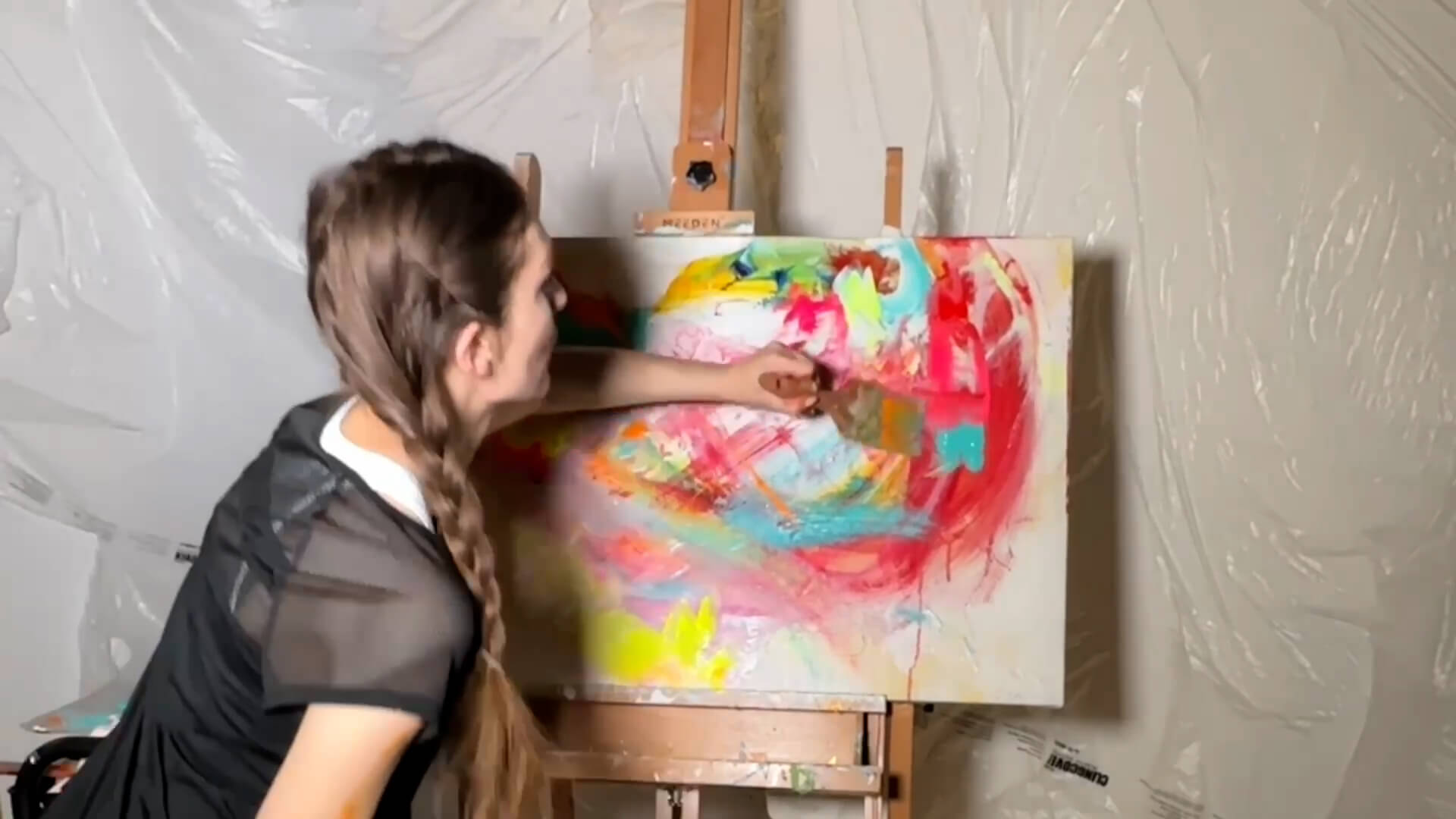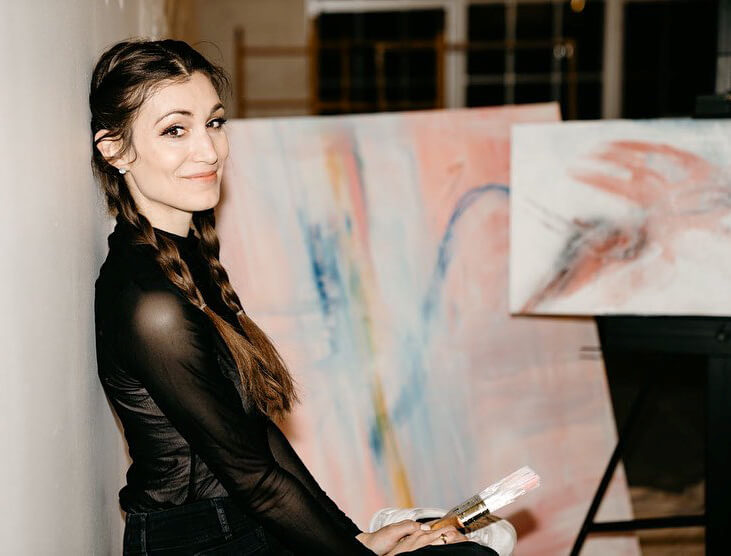
Sarah Kraning is a woman who sees colors, textures, and shapes when she hears sounds. (Credit: SWNS)
Like Pharrell Williams, Mary J. Blige, and Duke Ellington, this Minnesota woman diagnosed with synesthesia turned her unique diagnosis into a career
MINNEAPOLIS — A woman who sees colors, textures, and shapes when she hears sounds paints her experiences, claiming that Harry Styles’ voice appears as emerald green speckles of magic. While the condition sounds unique, the 30-year-old actually has some very famous company, including Pharrell Williams and Mary J. Blige.
Sarah Kraning has associated visuals with sounds for as long as she can remember but was only diagnosed with synesthesia at the age of 22. Sound-to-color synesthesia is a rare condition where sounds evoke experiences of color, shape, or movement. Growing up, Sarah struggled with the distractions caused by her condition and underwent testing for ADHD and autism.
In 2015, she finally received her synesthesia diagnosis after attending a lesson on the subject. Her visuals arise automatically like a “sense,” but they can be overstimulating, causing Sarah to wear earbuds or remove herself from certain situations. To Sarah, ocean waves appear as silver threads crisscrossing, and Kate Bush’s voice resembles a thick ribbon of bubble gum. She describes Harry Styles’ speaking voice as sounding like emerald green speckles of magic. Sarah uses the visuals she gets from music and sounds to create unique artwork.

What is synesthesia?
Synesthesia is a neurological condition in which stimulation of one sensory or cognitive pathway involuntarily leads to experiences in another pathway. For example, some people with synesthesia may associate colors with letters, numbers, or sounds. This sensory crossover can manifest in various forms, with individuals experiencing unique combinations of sensory associations.
It is generally believed that synesthesia affects approximately one in 2,000 people. The exact cause is not entirely known, but it is believed to involve a combination of genetic, neurological, and environmental factors. Synesthesia tends to run in families, supporting the genetic component to the condition. However, the specific genes involved have not been conclusively identified.
Another theory suggests that synesthesia arises from increased connectivity between different regions of the brain. In synesthetes, areas that process one type of sensory information may have stronger connections to areas that process other types of sensory information.
Scientists also believe that differences in neurotransmitter levels or functioning could play a role in the development of synesthesia. For example, altered levels of serotonin or dopamine may contribute to the formation of atypical sensory associations.
Have any famous artists battled the condition?
Several notable names have claimed to have synesthesia or experienced symptoms of it. Both Pharrell Williams and Mary J. Blige have spoken openly about having the condition in interviews, explaining they see colors when they hear music. Similarly, singer-songwriter Lorde has shared that it has influenced her music by allowing her to associate colors with certain sounds and emotions.
Legendary jazz musician and composer Duke Ellington reportedly had synesthesia and used color descriptions when discussing his music with band members.
Although there is no definitive proof, some art historians and researchers believe that the renowned painter Vincent van Gogh may have also had synesthesia. If true, it could certainly have contributed to his unique use of color in his artwork.
‘It’s so normal to me’
Currently living in Minneapolis, Sarah, an artist, has experienced synesthesia for as long as she can remember. At age six, she realized something was different about her when she told her mother that Disney music was sparkly. Her mother dismissed it as imaginative, but Sarah insisted that the music really was sparkly.
“It’s just a sense. It’s so normal to me,” Sarah explains in an online video posting.
Although synesthesia can be distracting and overstimulating, she feels fortunate and considers it a fun experience. She had an intense auditory sensitivity growing up, making classroom settings a struggle. Music, however, remains the most vivid to her.

Sarah believes synesthesia runs in her family, as her father, Max, 67, an English teacher, has misophonia — a discomfort with sound. High-pitched notes, such as a siren, are usually brighter for her. Colors will vary depending on whether someone else says a word or if she says it herself.
Certain sounds, like ‘sh’, consistently appear as spray paint to Sarah. Most sounds are “pleasant,” but some can be discomforting, such as the hoarse voice of someone with laryngitis, which appears scratchy, lumpy, and sharp to her.
Sarah experiences visuals for people’s names when spoken out loud but not when she reads them. She finds the name Everly beautiful, with silky blue shapes and twinkles of light in the ‘ly’ portion. Speaking of Harry Styles’ voice, she says, “Harry’s voice looks like emerald green speckles of magic.”
Using her unique sense, Sarah is inspired to paint and create art from the visuals she experiences in music. People send her voice notes of deceased loved ones, and she paints what she sees. “I paint what I see,” the 30-year-old explains.
Despite the drawbacks she has experienced in life due to her synesthesia, Sarah cannot imagine not having it. She says it is automatic, just like any other sense, and she cannot control it. “It has a mind of its own,” Sarah adds.
South West News Service writer Emma Dunn contributed to this report.










had that ‘condition’ back in the 70s and 80s. music became architectural structures in midair. going to concerts became a light show with huge 3d forms floating in air. finally outgrew that condition for better or worse. it came on real fast and then over the years faded away. probably had a brain tumor that dissolved itself. was not scary. very entertaining. only occurred when listening to music, mostly classical or experimental.